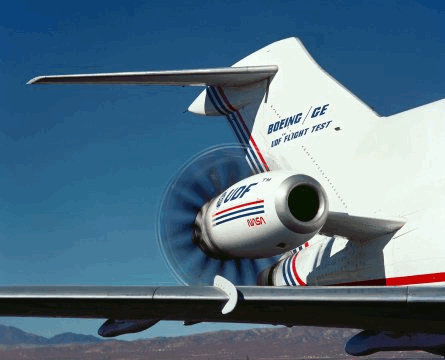CFM International has outlined some of the technologies that will allow its Leap-X new generation narrowbody engine achieve 16% lower fuel burn.
To keep the weight down the Leap-X will have titanium on the fan blade edge and the blade itself will be made of composite material produced using 3-D woven resin transfer moulding, executives from CFM International told airline executives at a briefing in Singapore.
This is important because Leap-X, which it is hoped will power Airbus and Boeing's future generation of narrowbodies, will a fan 16% larger than that of the CFM56. The Leap-X fan will be 1.8m (71in) in diameter and its 18 blades will have a combined weight of 76kg (168lb), whereas the CFM56-7B's fan is 1.55m in diameter and the combined weight of the 24 blades is 118kg.
 |
|---|
© CFM |
Having the composite fibres woven together on a loom allows the blades to handle more impact, says CFM's Leap-X programme director Herve Quiniou.
In December the General Electric/Snecma joint venture plans to test the composite fan blades by attaching them to a CFM56-5C engine, says CFM56 programme director Ron Klapproth, who also works on the Leap-X programme. He adds that in June next year there will be the first Leap-X test of the engine's core compressor.
CFM executive vice-president Bill Clapper says: "We need to do the core testing early."
Clapper says next year the core will be put in an altitude test facility and it will go through the entire flight envelope to see how the turbine, compressor and combustor work together.
"We want more thermal efficiency out of the core," he says, but adds that "as you make a hotter core to get more thermal efficiency" to ensure the turbine blade is efficient and durable.
He says the Leap-X compressor represents a major technological achievement because the length of the compressor does not increase, so it involves getting much more compression out of the same size compressor.
CFM has yet to get an aircraft maker to formally commit, but the company is carrying out studies in conjunction with airframers, says Clapper, referring to Airbus and Boeing. He says the engine-maker is also speaking to manufacturers in China and Russia. "To get the really big improvement [in fuel burn] you need to do both the engine and the airplane and if you re-engine an existing aircraft that's a half step rather than a full step," he adds.
In parallel with the Leap-X induction engine design, CFM is also developing an open rotor engine that promises to deliver 26% lower fuel burn. Clapper says some of the technologies developed for Leap-X, such as the core compressor, can be applied to the open rotor engine. The open rotor powerplant has a 4.27m diameter fan envelope so engine installation is an issue and "options for installation could hurt fuel burn", he adds.
Klapproth says the blades on the open rotor engine are counter-rotating and can operate at relatively low speeds, helping to reduce noise.
Source: Flight International























